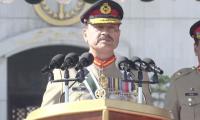The second summit meeting between Chinese President Xi Jinping and Indian Prime Minister Narendra Modi, held in Chennai on October 11-12, represented the continuation of an informal mechanism of top-level engagement between the leaderships of the two countries.
Though no formal joint communiqué was issued after the conclusion of the visit of the Chinese president, Xi and Modi used the opportunity to candidly discuss the state of bilateral relations, emphasise the deepening economic and trade relations and show their commitment to resolving all the contentious issues between the two countries peacefully through dialogue.
Underscoring the importance of more cultural exchanges and people-to-people contact in cementing the bilateral ties, the Chinese and Indian leaders decided to hold 70 events to mark the 70 years of the establishment of diplomatic relations. They also designated 2020 as the year symbolizing cultural and the people-to-people exchanges.
This was President Xi Jinping’s first overseas trip following the completion of 70 years since the founding of modern China. Travelling in a specially flown in ‘Hongqi’ limousine from Chennai to Mamallapuram, the Chinese leader spent the first day visiting three cultural landmarks of the town followed by a 30-minute cultural show along with Modi.
Their two-and-a-half-hour long one-on-one meeting over dinner, described as cordial and candid by the Indian media, focused on trade and terrorism. According to the Indian foreign secretary Vijay Gokhale, the two leaders identified ‘radicalization’ as posing a complex challenge to the security of both India and China.
President Xi and PM Modi had substantive engagements on day two, starting with a 50-minute long tete-a-tete followed by delegation-level discussions on a range of issues. While Modi emphasized the importance of what he termed as ‘Chennai connect’ as heralding a new era of cooperation between New Delhi and Beijing, President Xi Jinping described Indian hospitality as ‘overwhelming’, having ‘far-reaching impact on us’. He also endorsed ‘the right decision for this kind of informal summit’ where he and Modi “engaged in candid conversations like friends, heart-to-heart discussions on bilateral relations.”
The Chennai meet, which was a follow-up to the inaugural summit held in Wuhan, China in April 2018, provided both the leaders an opportunity to articulate their respective visions and priorities to strengthen bilateral relations.
In a fraught regional milieu, India and China have had a complex relationship to negotiate. Under the influence of enhanced strategic partnership with Washington, India has not approved of President Xi’s Belt and Road initiative (BRI) in general and CPEC in particular including Beijing’s special relationship with Pakistan. Likewise, Beijing has not been happy with New Delhi’s increasing tilt towards the US as well as its relentless opposition to the BRI, which it has termed as a harbinger of an era of shared prosperity.
Despite the strained nature of relations occasionally, both the countries understand how vital it is for them to keep communication lines open in order to manage the turbulence which may hit their relations and affect their economic trajectories owing to various factors operating at cross-purposes. Modi acknowledged this imperative when he said “strategic communication between our two countries has also increased.”
Modi’s assertion on the occasion that “we had decided to prudently manage differences and not allow them to become dispute” points to the shared realisation that imperatives of economic development are too vital to be left at the mercy of factors outside their control. Hence, their preference for an informal mode of engagement at the highest level.
Looking at the events happening before and after the Chennai summit, it is not possible to play down their impact in shaping the mood of the participating leaders. A day before President Xi flew to India, Prime Minister Imran Khan’s high-profile visit to Beijing and his meetings with the top Chinese leaders served to sensitize them about the unfolding human tragedy in Occupied Kashmir and consequent threats to peace and stability in South Asia after Modi’s August 5 action.
The Indian foreign secretary’s denial of Kashmir cropping up in discussions notwithstanding, China’s categorical denunciation of India’s annexation of Kashmir, and support for Pakistan’s position must have weighed on both leaders’ heads. China cannot remain aloof from the peculiar Indo-Pakistan dynamics shaping relations between New Delhi and Islamabad. Likewise, India must have followed PM Imran Khan’s visit to China very closely while preparing its talking points for Modi’s summit meeting with Xi Jinping.
After his sojourn in India, President Xi chose his Nepal visit to voice a dire warning to all those individuals and forces that China believes are conspiring against the territorial integrity of the country. During the first state visit by any Chinese leader in 22 years, Chinese officials signed 20 bilateral cooperation documents to elevate bilateral relations with Nepal to a strategic level.
Xi’s harsh tone and stern message was directed as much at those stoking fires in the ongoing conflict in Hong Kong as it was on dissident elements accused by China of conspiring against the mainland such as the Dalai Lama, who has been in India since 1959. Jinping’s statements in Nepal will not have escaped the attention of the Indian authorities.
Amid a trade war with the US and other regional challenges, China continues to maintain a very delicate balance between the imperative of its economic development and the demands of an increasingly deepening global leadership footprint that runs the risk of embroiling Beijing.
The India visit shows that China is aware of the long strategic goals it has enunciated as part of the BRI to establish what it considers as ‘a community of shared interests’ and a rule-based multilateral world order with the UN as its core. The Chinese strategic community is convinced that sharing the fruits of economic development through multilateral collaborations and trade partnerships can create a peace constituency.
Despite being wary of the long-term Indian ambitions in the broader South Asian region, Beijing is still keen to do business with New Delhi on a shared agenda that benefits both the nations.
While those critical of China’s grand designs could describe the BRI as an example of ‘benign imperialism’, Beijing’s conduct does offer a powerful template of pursuing inter-state relations in what it describes as a ‘win-win’ model of international cooperation.
The writer, a Cheveningscholar, studied at theUniversity of Sussex.
Email: amanatchpk@gmail.com
Twitter: @Amanat222
People stand in line up as election officials check their ballot papers during voting general election at a polling...
Women show their voter identity cards as they stand in a queue before casting their votes in Agartala. — PTIThe 18th...
Former prime minister Imran Khan. — Instagram/ imrankhan.ptiAn old saying has it that “when you dance with the...
Kashmiris in Indian illegally occupied Kashmir protesting against the Indian occupation as the forces of India looked...
A representational image showing residents walking at a wholesale market in Karachi. — AFP/FileOnce again there is...
A representational image showing late Pakistani human rights activist and Supreme Court lawyer Asma Jahangir. —...







